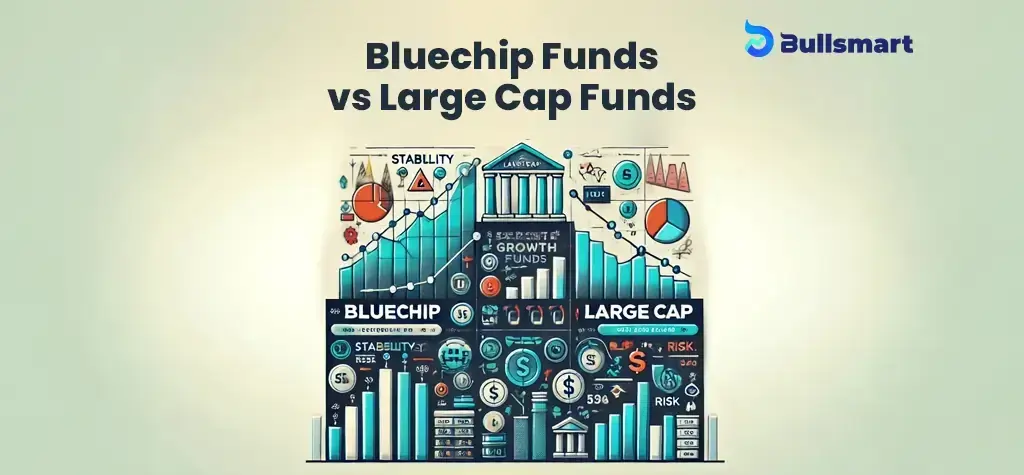Large cap funds play a key role in building a solid core for any investor’s equity portfolio. These funds are generally less risky compared to mid-cap and small-cap funds, making them a popular choice for those seeking stability.
However, many actively managed large cap and blue chip Equity Funds have struggled to beat their benchmarks in recent years.
In fact, data shows that over the last three years, more than 80% of largecap funds underperformed their respective benchmarks.
This has sparked growing interest in index funds, which aim to mirror the performance of a specific benchmark through passive management. With fewer intervention decisions by fund managers, these funds have gained popularity for their simplicity and cost-effectiveness.
According to the Association of Mutual Funds in India (AMFI), the assets under management (AUM) of index funds soared to ₹1.73 lakh crore in 2021-22, a remarkable 197% jump from ₹58,173 crore the previous year.
So, when planning your portfolio, which one should you go with? To answer that, it’s important to first understand the difference between large cap funds and blue chip funds, and how each fits into your investment strategy.
Let’s explore!
What are large cap Funds?
Largecap funds invest primarily in shares of large companies that have significant market capitalisations, typically exceeding ₹20,000 crores.
These companies are often industry leaders with a strong market presence and a solid reputation built over decades. Because of their established nature, Large cap Funds tend to exhibit lower volatility, offering a more stable investment option with reduced risk for investors.
However, their growth potential may be limited compared to mid and small cap equities. Overall, large cap funds appeal to those seeking a balance of stability and growth in their investment portfolios.
Examples of large cap funds include HSBC Large Cap Fund, Nippon India Large Cap Fund, Edelweiss Large Cap Fund etc.
What are bluechip Funds?
Blue chip funds are a specific type of largecap fund that focuses on investing in blue chip stocks—shares of the most reputable and financially stable companies in the market.
These companies are known for their strong performance, reliability, and ability to generate consistent returns over time. While there isn’t a formal category for blue chip funds as per SEBI’s guidelines, most Large cap Funds include a significant portion of blue chip stocks in their portfolios, typically around 80%.
This makes blue chip funds an attractive option for investors looking for a diversified investment in well-established companies with a history of solid performance.
Examples of some popular blue chip funds include ICICI Prudential Blue chip Fund, Kotak Bluechip Fund, SBI Bluechip Fund etc.
Large Cap Funds vs blue chip Funds
Here’s a quick comparison between Blue Chip Funds and Large Cap Funds:
| Aspect | Bluechip Funds | Large Cap Funds |
| Risk Level | Lower, with focus on well-established companies. | Moderately low, exposed to market volatility. |
| Return Potential | Moderate, consistent over the long term. | Moderate, typically higher during bull markets. |
| Volatility | Lower due to stable companies. | Slightly higher than blue chip, but lower than mid-cap. |
| Investment Horizon | Best for long-term (5+ years). | Suitable for medium to long-term (3-5 years). |
| Ideal for Investors | Conservative investors seeking stability. | Investors wanting balanced exposure to the stock market. |
Top Performing Funds
Here are some of the top performing Mutual Funds in this category
| Fund Name | Category | 1 YearReturn (%) | 3 yearReturn (%) | 5 Year Return (%) | AUM(Cr.) |
| Nippon India Large Cap Fund | Equity | 33.74% | 19.04% | 21.47% | 34,432.09 |
| ICICI Prudential Bluechip Fund | Equity | 35.40% | 17.02% | 20.43% | 66,206.57 |
| Invesco India Large cap Fund | Equity | 38.55% | 14.49% | 19.57% | 1,289.72 |
| HDFC Top 100 Fund | Equity | 31.28% | 16.65% | 19.26% | 38,683.63 |
| JM Large Cap Fund | Equity | 36.11% | 16.24% | 19.18% | 429.06 |
Which One Should You Choose?
Here are some factors you should consider while choosing which one to go for:
Investment Horizon: Bluechip Funds are better for long term, while LargeCap Funds can suit medium-term goals.
Risk Appetite: If you prefer stability, choose Blue chip Funds. If you are comfortable with some market fluctuations, Large Cap Funds might be ideal.
Financial Goals: For income through dividends, Blue chip Funds are more suitable. For capital appreciation, Large Cap Funds can be a good option.
Suggested Read – Best Small Cap Mutual Funds to Invest in October 2024

